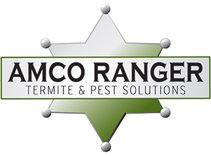What is the Best Way of Getting Rid of a Termite Infestation?
Termites cost approximately $5 billion in property damage every year. What is worse is that homeowners’ insurance policies typically do not cover these costs. Many homeowners try prevention tactics to deter termites from their home and avoid this extremely costly problem. Unfortunately, prevention tactics do not always work and sometimes, homeowners have to consider how to get rid of termites that have already invaded their home. When that is the case, it is best to enlist the help of a pest control company that can eliminate a termite infestation effectively, and make sure it does not return.
Soil Treatments
Soil treatments are particularly effective against subterranean termites that live in the soil. When applying these treatments, a pest control treatment will use a termiticide, a type of pesticide, directly in the soil. The first step in applying this treatment is digging a trench around the foundation of a home, the area in which termites first enter. These trenches are typically dug to an approximate depth of 50 millimeters from the top of the foundation.
Once the trench is dug, the soil is then treated with either repellant or non-repellent chemicals. Repellent chemicals are the more traditional form and they simply deter termites from entering the home. Due to the structure of the soil, this method is not always effective because termites may still find an area that is not treated and make their way through. On the other hand, repellent chemicals actually kill the termites and are much more effective.
After the soil is treated, the trench is then filled again with the treated soil, effectively creating a barrier that keeps termites out. Soil treatments are very effective and will usually keep termites out of the home for five years, on average.
Wood Treatments
Wood treatments are particularly interesting because these treatments affect the actual wood of the home and not the soil around it. These treatments are also not limited to just one type of treatment, but several. Wood treatments include spraying the surface of the wood, injecting sprays and foams, and using Borate treated wood.
Termites often enter a home when there is exterior wood that sits on the ground or close to the ground, making for easy access for termites. Borate is a chemical that penetrates the wood and creates a barrier that termites cannot pass. When the critters eat this wood, they are poisoned and die. The borate must also be treated afterwards to seal in the chemical and ensure its effectiveness. These applications should never be done by homeowners on themselves. Protective gear is crucial, as the poison that affects termites can also adversely affect people, so a pest control company is critical in applying these treatments.
Wood treatments can be applied prior to the construction of a home, but homeowners currently experiencing a termite problem can also benefit from these wood treatments.
Bait Systems
Bait systems are extremely effective at destroying termites and eliminating an infestation. Using this method, a pest control specialist will install bait stations around the perimeter of a home where termites are likely to reside and travel to get into the home.
Sometimes these bait stations are called traps, but that is misleading. These systems do not actually trap the termites, but they contain bait, such as wood or cellulose, that is treated with a substance that is poisonous to termites. That bait also does not necessarily kill the termites instantly. The bait is slow-acting so that termites can return to their colony and spread the bait to others, effectively eliminating the entire problem.
Bait systems are one of the best ways to get rid of termites, particularly for homeowners that find that wood surface treatments do not work. Bait systems are often used in locations where wood surface treatments are not effective, such as close to foundation drains and areas covered by certain types of flooring that may require drilling.
Bait systems are available for purchase, but to gain the most effectiveness from these types of treatments, a professional pest specialist should always be called to set up these systems. A professional will know how to effectively set these bait stations so they eliminate the most amount of termites in the least amount of time. A professional will also continue to monitor the bait systems to ensure their continued effectiveness.
Our Missouri Pest Control Specialists are Here to Help
Although homeowners have many solutions that can help them kill termites that invade the home, it is always best to call a St. Charles pest control specialist for help. At Amco Ranger, we understand the best ways to kill termites in the home, and to keep them from coming back. If you are having a termite problem, call us today at (636) 224-6099 or contact us online to schedule a free inspection.
